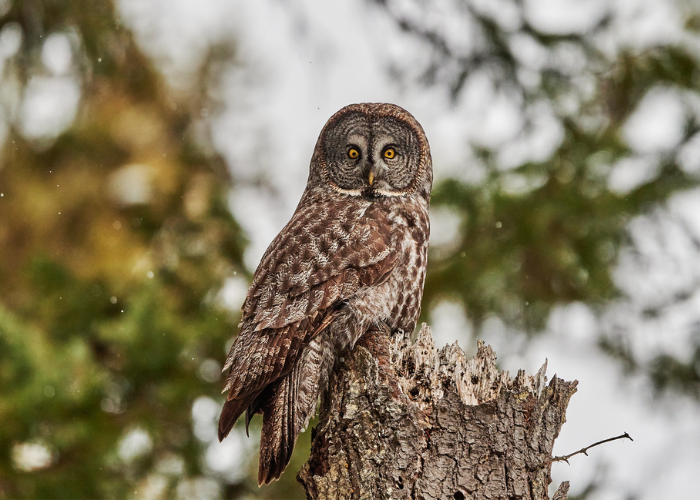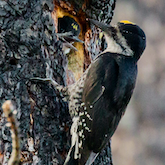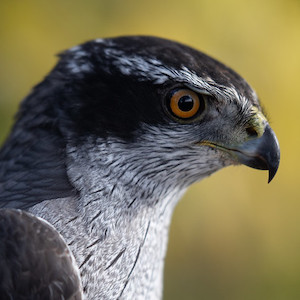Fire has always had an important role in the Sierra Nevada’s forest ecosystems, and animals in those ecosystems, including raptors like Great Gray Owls, Spotted Owls, and American Goshawks, have long persisted. But fires have changed. A warmer and drier climate, combined with a build-up of fuels due to decades of fire suppression, has made fires bigger and more severe than ever before. Today’s megafires threaten human communities and potentially some wildlife. As land managers take action to reduce wildfire risk to human communities and resources, understanding and mitigating the effects of those actions on wildlife- and when possible tailoring them to benefit wildlife- is becoming increasingly important.
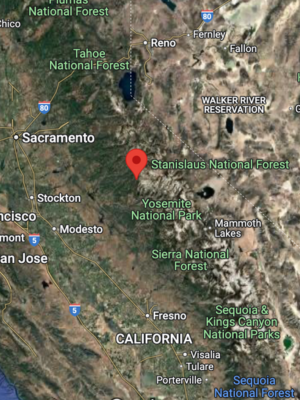
Map showing location of Stanislaus National Forest in California, north of Yosemite National Park.
The Social and Ecological Resilience Across the Landscape, or SERAL, project is a forest management project spanning 100,000 acres of the Stanislaus National Forest in the central Sierra Nevada of California. The project aims to reduce wildfire risk to area communities such as Sonora and Twain Harte, protect critical infrastructure like municipal water systems, increase forest resiliency, and provide wildlife habitat. The Forest Service is using a combination of thinning and controlled burn treatments to reduce the amount of fuels in the forest so that when fires do occur, they resemble historic fires- smaller and with mixed burn severity- rather than recent mega-fires. This effort is expected to benefit wildlife in the long term but will cause disturbance in the near term. IBP is working with the Forest Service to minimize the risks of short-term disturbance of nesting Great Gray Owls, Spotted Owls and American Goshawks, and to evaluate the effects of the larger project on these species over the coming years.
Since 2021, IBP has trained and deployed field crews to search for Great Gray Owl, Spotted Owl, and American Goshawk nests and territories on the forest. IBP project co-leaders Ramiro Aragon and Lynn Schofield work closely with the Forest Service. “They communicate to us where thinning or controlled burns will be happening so we can conduct surveys and identify nesting locations for our study species before any major disruption can happen,” says Schofield. “In turn, we let them know where we find nests and territories so they can adjust their activities accordingly by adjusting the location or timing of actions that could potentially interfere with breeding owls or goshawks.”
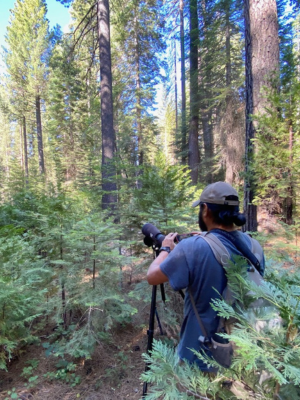
IBP biologist Ramiro Aragon checks an American Goshawk nest from a safe distance using a scope.
When a nest site or territory center is located, a “Protected Activity Center” or PAC is established around it. The PAC is essentially a boundary around the nest/territory that contains sufficient appropriate habitat to serve as core nesting territory for the given species. Historically the Forest Service has excluded the PACs from forest treatments like thinning or prescribed fire, but mitigating fire risk requires some management across the whole landscape. More recently prohibitions against activities within PACs have been loosened to allow limited treatments within PAC boundaries, provided that care is taken to minimize disturbance on breeding birds. Now, when an active nest is found, an LOP or “Limited Operating Period” is established for the area within a quarter mile of the nest that delays treatments until late summer when young birds have fledged. Our study will help evaluate the birds’ responses to forest treatments facilitated by this loosening of rules.
This real-time coordination with the Forest Service to establish PACs and LOPs immediately benefits the birds, but that is not the only goal of IBP’s work. The SERAL project also presents a valuable opportunity to study the long-term effects of thinning and controlled burn treatments on Great Gray Owl, Spotted Owl, and American Goshawk populations. Population-level effects on relatively long-lived and slow-reproducing species like these raptors may not be apparent in the first year or two after treatment. For instance, a species particularly sensitive to disturbance may abandon an area during and immediately after treatment, but return in a couple of years and thrive there if treatment has led to beneficial habitat conditions. Likewise, whether a species remains in the short term doesn't necessarily translate to long-term population stability. IBP will continue monitoring these species on the Stanislaus National Forest through the summer of 2027 at a minimum and possibly longer.
Unlike some raptors, like Osprey or Bald Eagles, the focal species in this project are more secretive in their nesting behavior. But Aragon says that time in the field closely observing owl and goshawk behavior and signs pays off in nest-finding success. This past season he and his crews located 5 Great Gray Owl nests and 11 Spotted Owl Nests. American Goshawk nests can be especially tricky to find, but this year the Goshawk crew successfully located 6 nests.
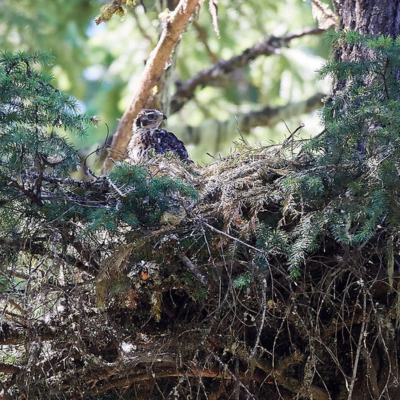
A juvenile American Goshawk peeks out of its nest. Photo by Frank D. Lospalluto.
Schofield says there is a large population of Spotted Owls in the study area, and anecdotal observations suggest recent controlled burns may not have caused them to leave the area or impacted their nesting success, though more data and rigorous data analysis are still needed. However, she notes that it’s harder to draw preliminary conclusions about American Goshawks. “It's hard to speak to how goshawks are being affected,” says Schofield, “because their nesting is naturally a little less consistent, young are often fledged by the time nests can be discovered and they are generally less densely populated in this region.” As with the goshawks, it is too early for preliminary conclusions about Great Gray Owl response to the treatment. Aragon notes that, unlike Spotted Owls, there is little historical monitoring data for this species on the Stanislaus National Forest prior to this project, so it is difficult to make comparisons. “However,” says Aragon, “it is an encouraging sign that we have found additional reproductive pairs of Great Grays every year we survey.”
Our partners at the Forest Service are also encouraged. “The Forest Service is very grateful for our partnership with IBP,” says Ryan Kalinowski, Wildlife Biologist for the Stanislaus National Forest. “It brings great comfort knowing that our land management decisions are being informed by a fantastic group of surveyors and researchers. We are constantly refining our actions based on IBP’s survey results, and we will learn so much from their research results in the near future.”
IBP’s work is yielding immediate benefits for Great Gray Owls, Spotted Owls, and American Goshawks breeding on the Stanislaus National Forest. Perhaps more rewarding is knowing that our research on the effects of the fire risk reduction treatments on these raptors will inform land management decisions on other forests in the region and aid in science-based, effective conservation of these species.
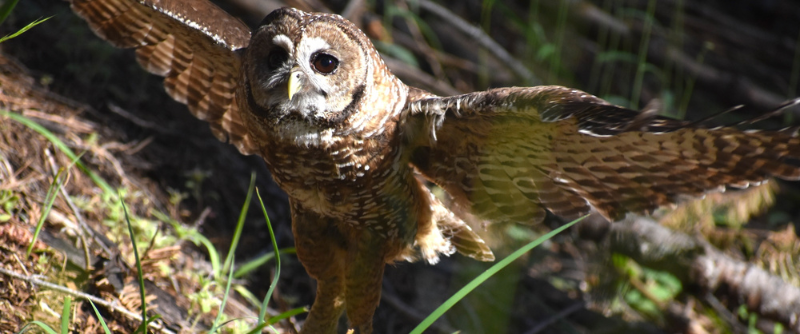
A Spotted Owl takes flight. Photo by Margaret Jensen.


